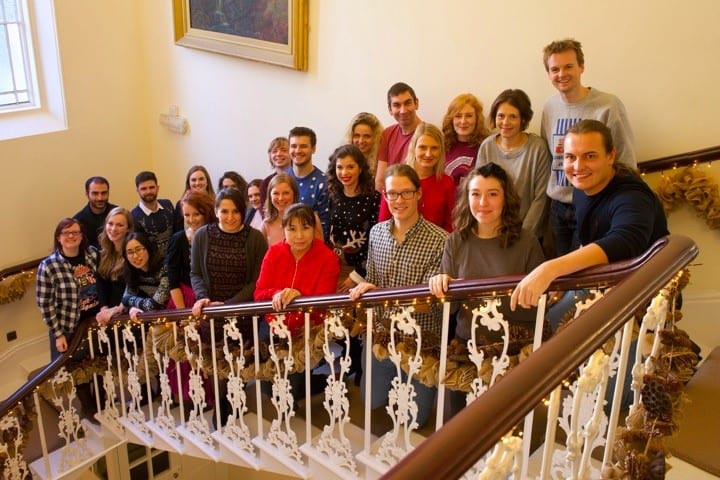Posted By: Sarah Ratzel, PhD, Science Editor, AJHG
Each month, the editors of The American Journal of Human Genetics interview an author(s) of a recently published paper. This month, we check in with Jonathan Mill to discuss his paper, “Leveraging DNA-Methylation Quantitative-Trait Loci to Characterize the Relationship between Methylomic Variation, Gene Expression, and Complex Traits.”

AJHG: What caused you to start working on this project?
Jonathan: Our lab studies the genomic basis of complex human diseases, and we’re particularly interested in the mechanisms underpinning transcriptional regulation. The last decade has seen tremendous advances in understanding the role of common genetic variation in health and disease, but genome-wide association studies (GWAS) don’t always identify specific causal genes, and we know that the variants associated with disease are likely to influence gene expression rather than causing changes to the transcribed protein. We have been quantifying genetic and epigenetic variation in large numbers of samples and have been thinking about ways of integrating these datasets to fine-map GWAS regions.
This project built on our previous work using DNA methylation quantitative trait loci (mQTLs) to interpret the functional consequences of common genetic variation associated with neuropsychiatric disease and other human traits. We generated blood mQTL data in the Understanding Society UK Household Longitudinal Study (UKHLS) and used these to refine genetic association data from publicly available GWAS datasets in order to prioritize genes involved in complex traits and diseases. We also sought to identify pleiotropic relationships between DNA methylation and variable gene expression by using publicly available whole-blood gene expression QTL (eQTL) data.
AJHG: What about this paper most excites you?
Jonathan: First, we have generated an extensive mQTL dataset, using the new Illumina EPIC DNA methylation array to identify over 12 million associations between genetic variants and DNA methylation sites, including a large number not identified by previous DNA methylation-profiling methods. We show that there are many instances of shared genetic signals on neighboring DNA methylation sites and that these associations are structured around both genes and CpG islands. We hope these will be a valuable resource for the genetics community, and our data can be downloaded from our website.
Second, we demonstrate the utility of these data for interpreting the functional consequences of common genetic variation associated with human traits by using summary-data-based Mendelian randomization (SMR) to identify >1500 pleiotropic associations between complex traits and DNA methylation sites. Finally, we use these data to explore the relationship between DNAm and gene expression by using genetic instruments rather than correlations to infer associations between specific DNA methylation sites and genes.
AJHG: Thinking about the bigger picture, what implications do you see from this work for the larger human genetics community?
Jonathan: Our results add to an increasing body of evidence showing that genetic influences on DNA methylation are widespread across the genome. We show that integrating these relationships with the results from GWAS of complex traits and genetic studies of gene expression can improve our understanding about the interplay between gene regulation and expression and facilitate the prioritization of candidate genes implicated in disease etiology.
AJHG: What advice do you have for trainees/young scientists?
Jonathan: Most importantly, pick a subject you are passionate about and make sure your science continues to be fun! The biggest and best-funded labs are not necessarily the best places to train; research is all about teamwork and collaboration, and to me, these are key attributes that trainees and young scientists should look for in selecting a place to study and learn. Don’t be afraid to be wrong, and you should never worry about questioning your supervisor or mentor; I have learned so much from the exceptional postdocs and students in my lab who generally know a lot more than I do! Finally, make sure you keep a good work-life balance; it’s important to switch off and realize there is more to life than grant funding and papers.
AJHG: And for fun, tell us something about your life outside of the lab.
Jonathan: I live in a small fishing village on the Devon coast just outside Exeter in the UK. When I’m not trying to understand gene regulation in the brain, I spend a lot of time in my allotment attempting to grow enormous vegetables. I also cycle a lot, and last year rode to Paris from the UK along with Eilis Hannon (first author on this paper) to raise money for the amazing Alzheimer’s Society who fund our work into dementia.
Jonathan Mill, PhD, is a Professor of Epigenetics at the University of Exeter and Psychiatric Epigenetics at Kings College London.
